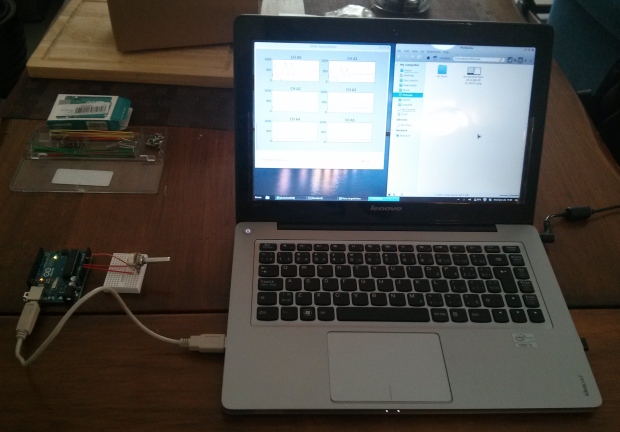A quick Google search of Arduino+DAQ will return a ton of results but none of them seemed to do quite what I was looking for. There are lots of websites explaining how you can use an Arduino to build a very inexpensive DAQ (Data Acquisition) instead of using a commercial product which would be expensive. This is a great idea and the Arduino is more than capable of logging data for practical purposes and there are a lot of great existing projects out there. However in my opinion they were all too “Arduino-ie” (logging to sd cards, or printing directly to a serial lcd screen etc.) and kind of fail to hit the right market. That is why this project was born!
In truth this isn’t really much of an Arduino project it’s more of a python project - I set out to create a proper gui interface for using the Arduino as a DAQ. The Arduino program itself is very simple, it reads each analog pin and sends the data over serial. The real magic is what happens on the other end - a python program receives the data and plots each analog channel in real-time, sort of what you’d expect using a tool like Labview. There is also a text field where a file name can be entered and a button to begin saving the data to your computers hard drive in csv format. The program looks like this:

I rigged up a little test bed for my Arduino DAQ using my new Arduino and a potentiometer. Here is a photo of my setup:

The full source code for both the python program and the Arduino program are on my GitHub account:
github.com/kevinhughes27/arduinoDAQ
please use, improve and give me some feedback!
